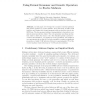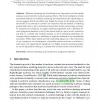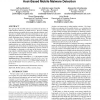43 search results - page 2 / 9 » A study of malware in peer-to-peer networks |
RAID
2009
Springer
13 years 11 months ago
2009
Springer
In this paper, we leverage the concepts of formal grammar and genetic operators to evolve malware. As a case study, we take COM infectors and design their formal grammar with produ...
ACSAC
2010
IEEE
13 years 3 months ago
2010
IEEE
Conficker [26] is the most recent widespread, well-known worm/bot. According to several reports [16, 28], it has infected about 7 million to 15 million hosts and the victims are s...
IPCCC
2007
IEEE
13 years 11 months ago
2007
IEEE
Rapidly-spreading malicious software is an important threat on today’s computer networks. Most solutions that have been proposed to counter this threat are based on our ability ...
RAID
2010
Springer
13 years 3 months ago
2010
Springer
Malware clustering and classification are important tools that enable analysts to prioritize their malware analysis efforts. The recent emergence of fully automated methods for ma...
MOBISYS
2011
ACM
12 years 8 months ago
2011
ACM
The rapid growth of mobile malware necessitates the presence of robust malware detectors on mobile devices. However, running malware detectors on mobile devices may drain their ba...



